Learning more about lacto-fermentation
Last year, I got myself a Christmas gift: the Noma Guide to Fermentation by Noma’s René Redzepi and David Zilber. Despite my excitement about the subject matter, I hadn’t touched the book until late May, when quarantine boredom (and despair about the world) reached some sort of head. On a particularly miserable day, I opened the book and started grinning ear to ear about the possibilities1, and quickly started plotting my fermentation setup.
Lacto-fermentation, or lactic acid fermentation, is one of the easiest fermentations one can do. It typically consists of adding salt to a sugary fruit or vegetable, removing oxygen, and waiting. You can lacto-ferment at room temperature, which makes it easy to do without sophisticated equipment2.
The Noma book does a really great job explaining how the science of fermentation actually works, and covers much more than lacto-fermentations. I hope to soon make koji, miso, and black garlic3 in addition to fermented products not covered in the book.
Lacto-fermented blueberries
Lacto-fermented blueberries follow the same script as most lacto-fermented products.
- Rinse and weigh out the product
- Add a percentage of the product’s weight in salt (I went with 2%4)
- Place mixture in a glass jar or vacuum seal
- Keep at room temperature (or slightly above it) and wait about a week
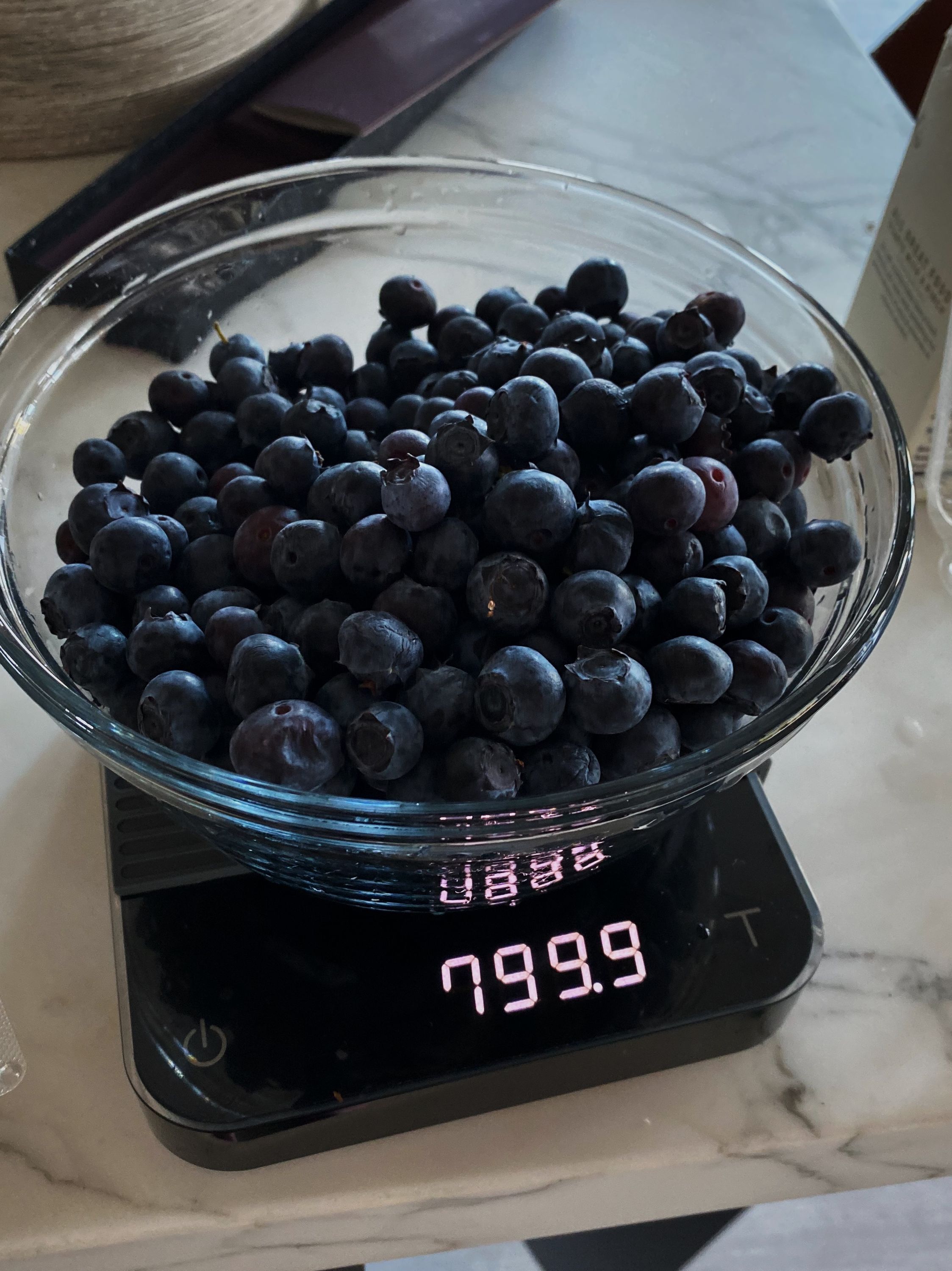
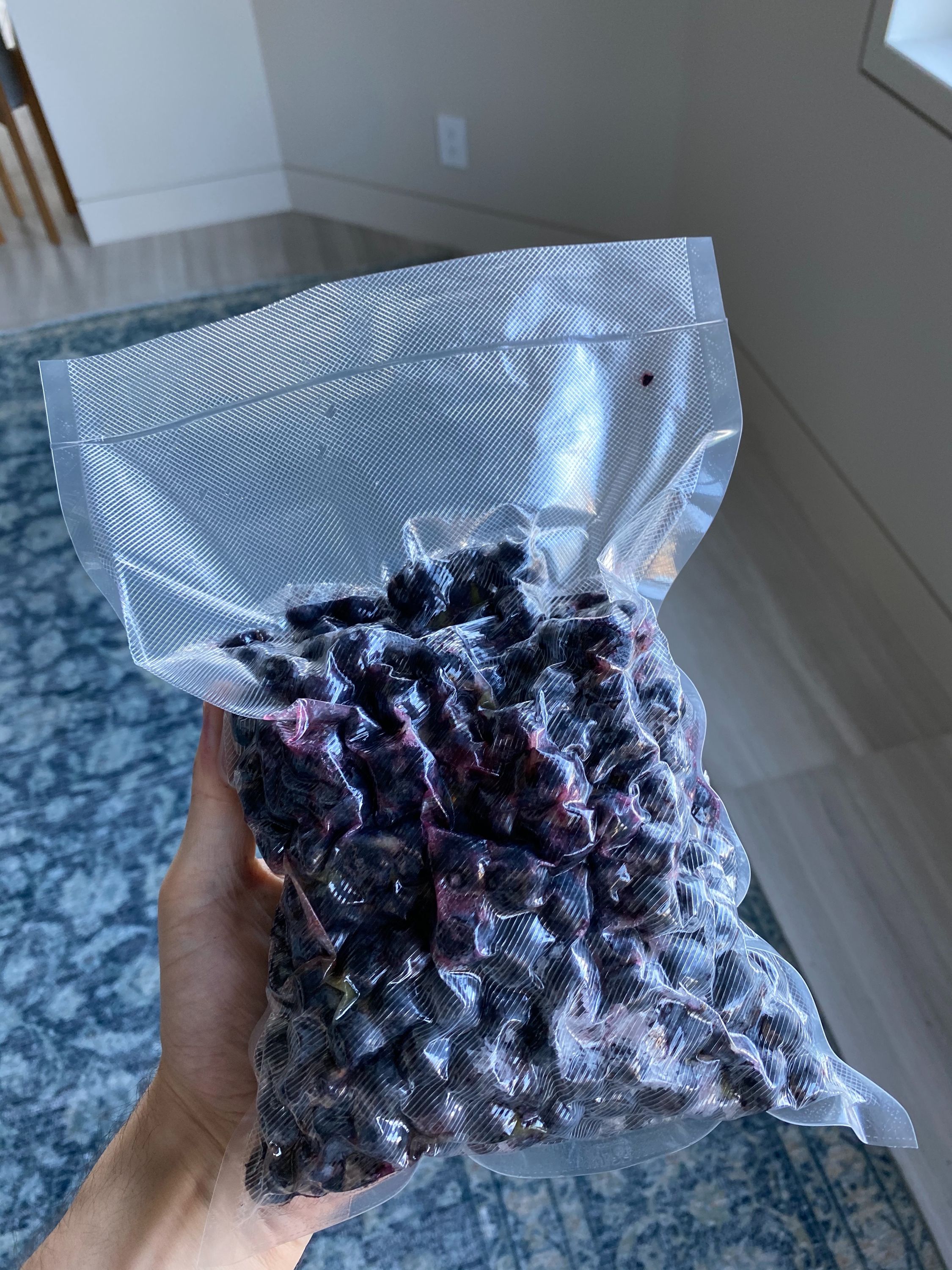
Weighing and vacuum sealing the blueberries
I opted to vacuum seal this batch. When vacuum sealing, after a day or so, it’s normal for the bag to fill up with gas. You simply need to cut off a corner, “burp” the gas out and re-seal it. Resealing the bag also helps the fermentation process as compressing the berries squeezes out more of the juices.
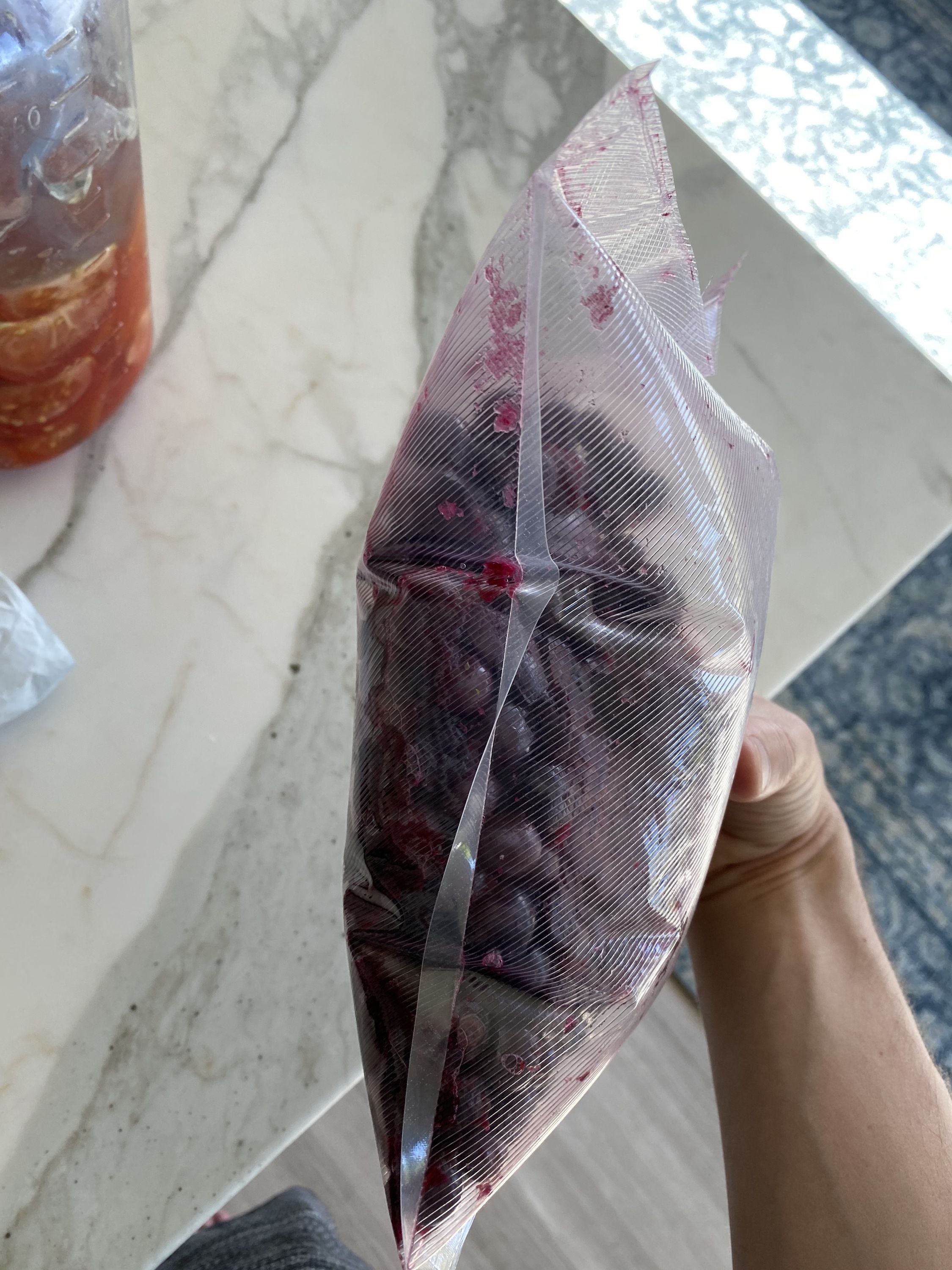
After a week, I noticed that the citric flavors of the blueberries were replaced with more of a sour complexity. I’d describe some of these notes as even nutty and herbal. After feeling satisfied with this flavor, I separated the blueberries from their juices and froze the berries.
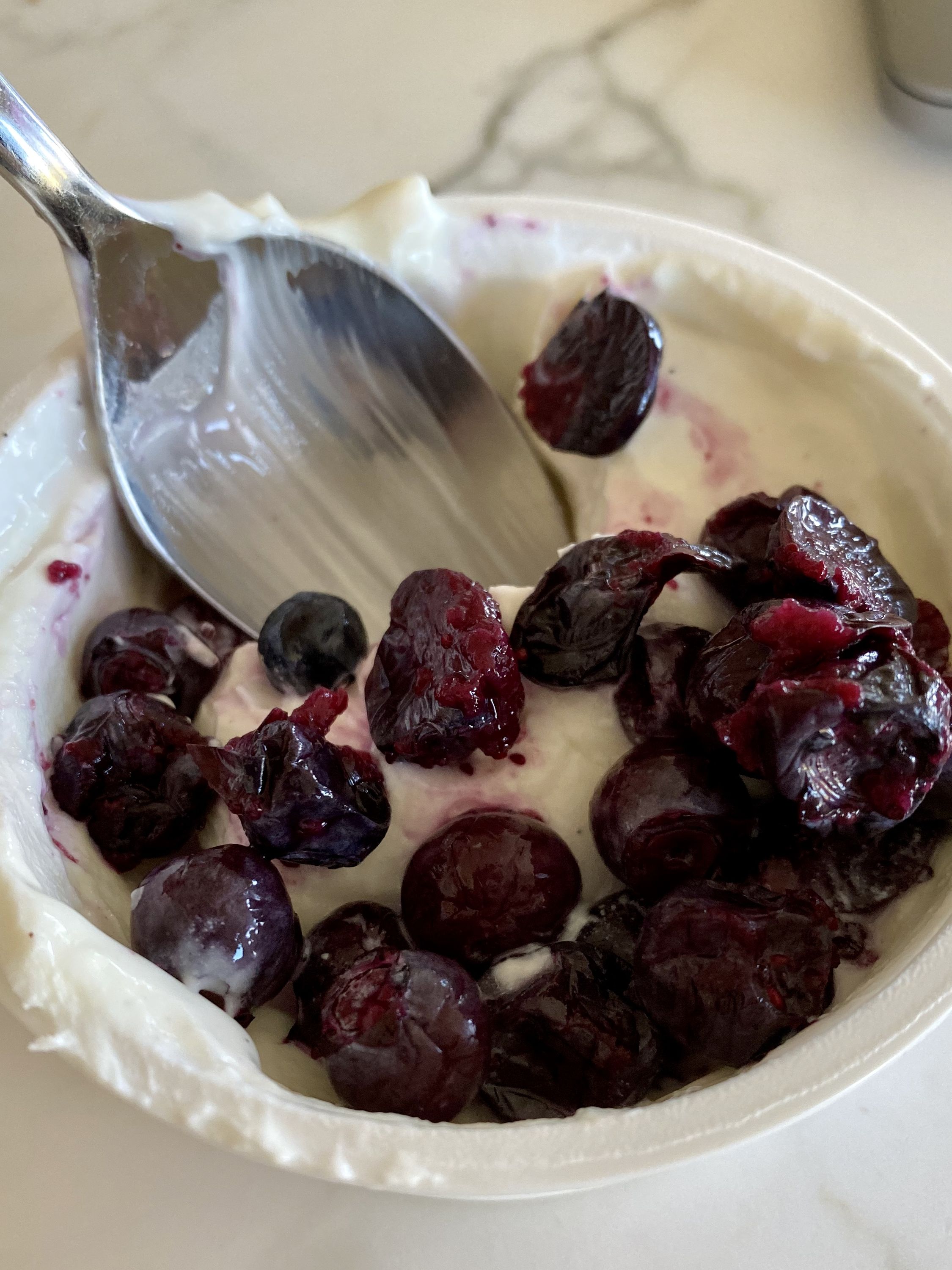
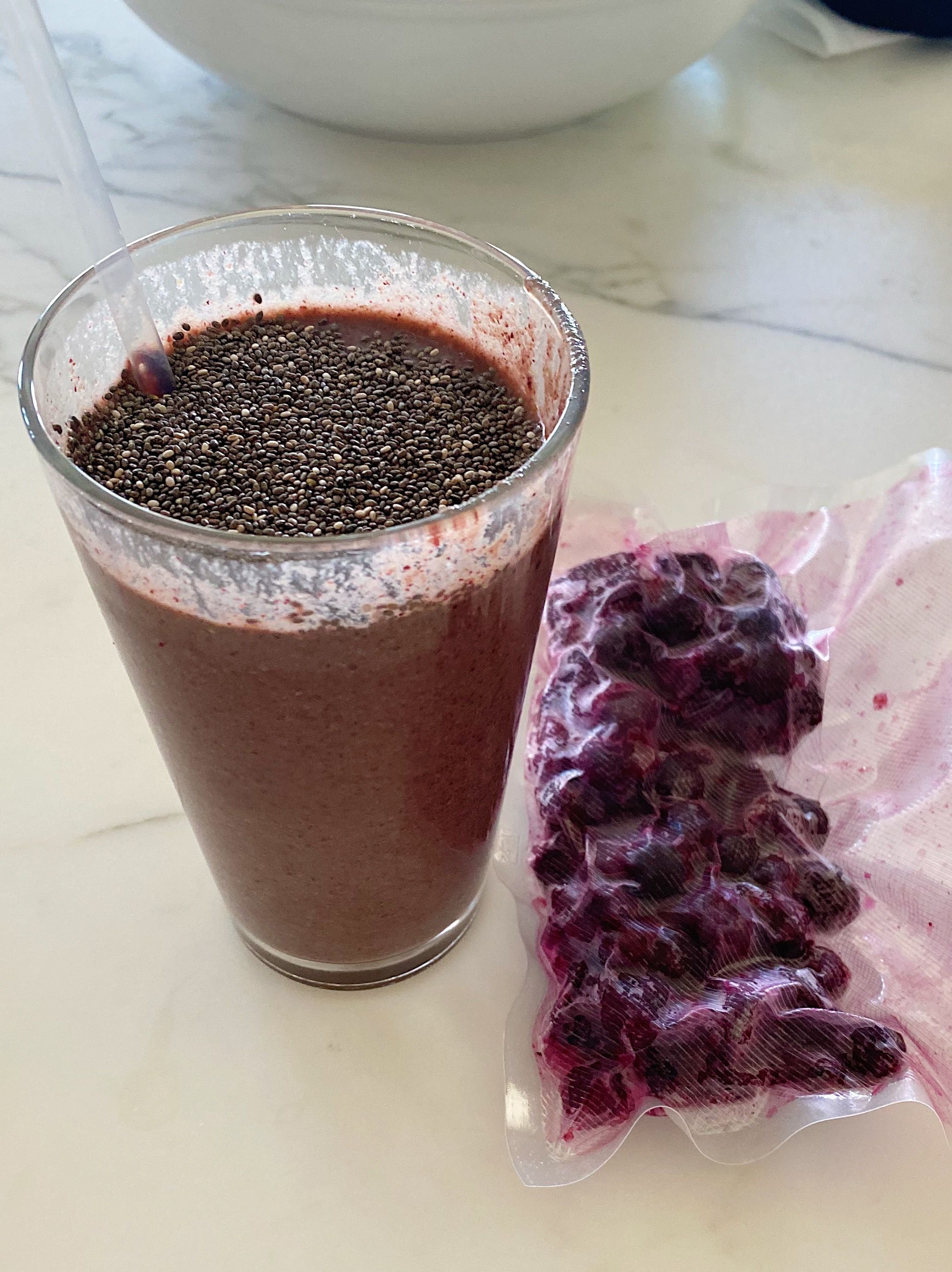
The lacto-fermented berries were great on yogurt, but really shine in smoothies. Adding a handful of frozen lacto-fermented berries added a tart flavor profile that works really well with leafy vegetables. Going forward, I think I want to always have some lacto-fermented berries in my freezer.
Lacto-fermented tomato water
I’d heard of tomato water being used in various recipes before, but I’d never actually made it. The process to make lacto-fermented tomatoes isn’t really different than blueberries, save an extra step to drain the water from the tomatoes at the end.
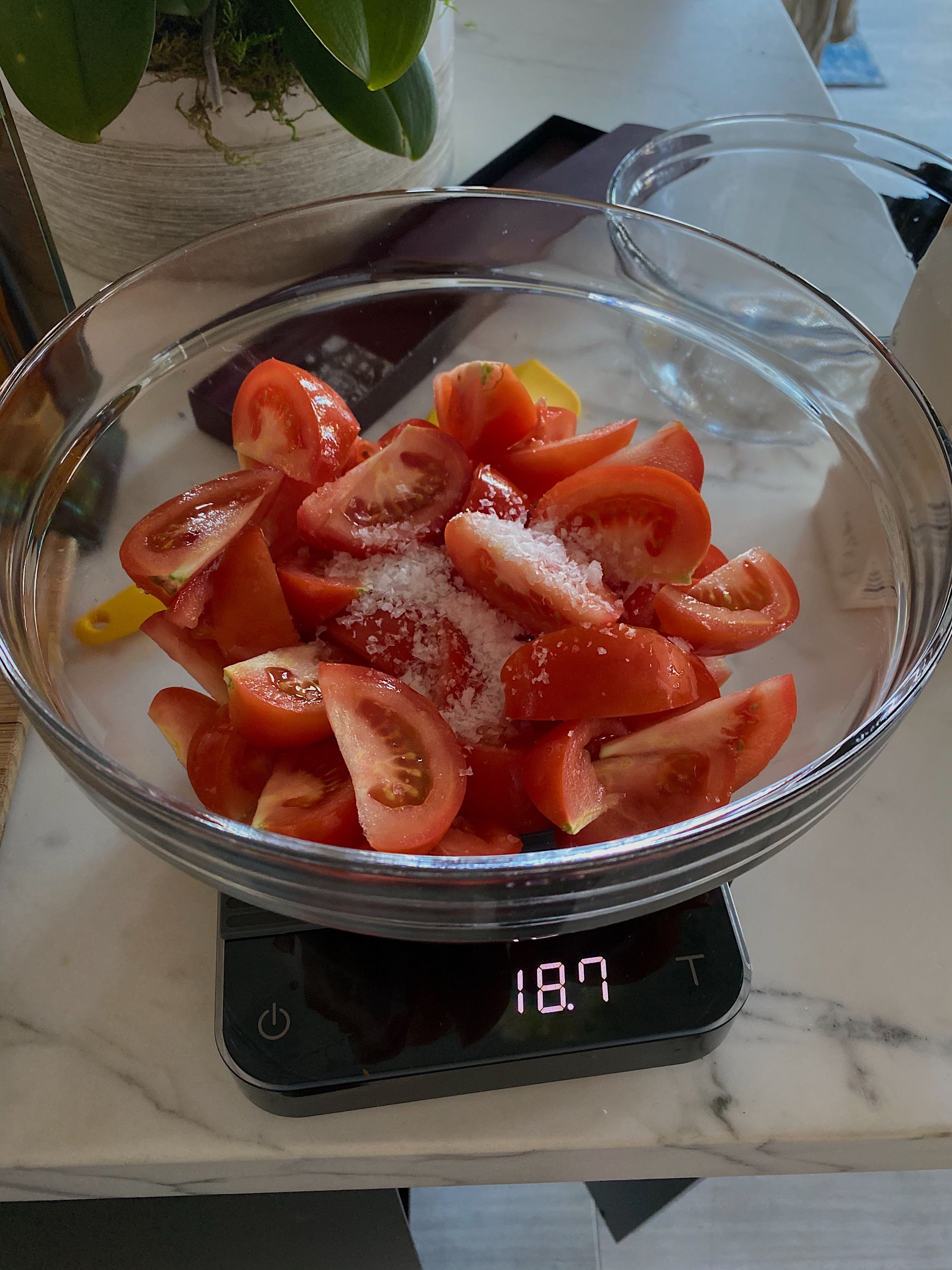
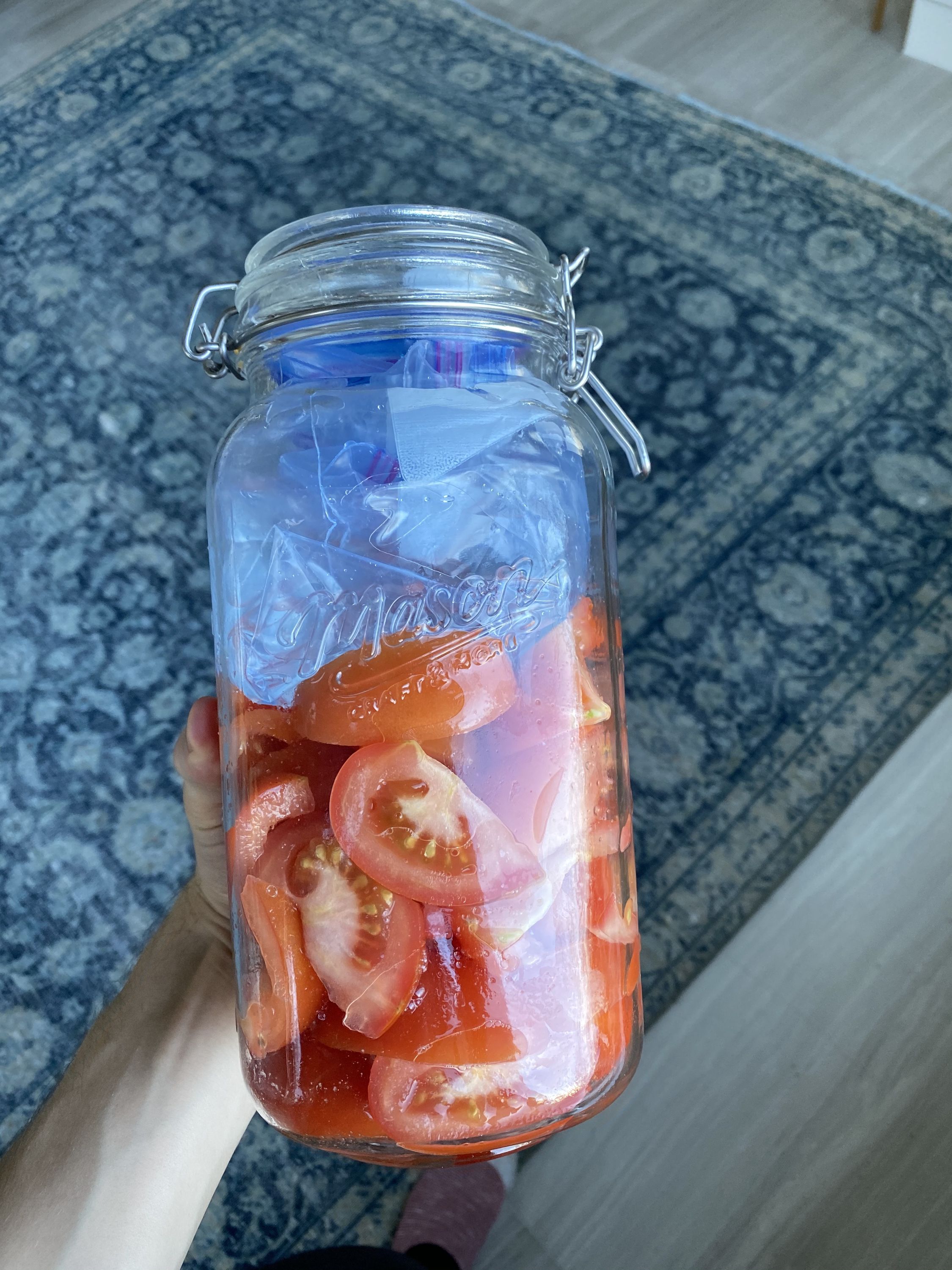
I did this fermentation in a large mason jar with plastic bags full of water set on top of the tomatoes to weigh them down. This isn’t tremendously different from the vacuum seal method, however there is one catch. In jars, it’s common for a wispy white substance to grow at the top of fermentations. This isn’t mold, it’s kahm yeast, which is harmless but doesn’t taste amazing. Every day, I checked the top of the jar for this yeast and skimmed any out.
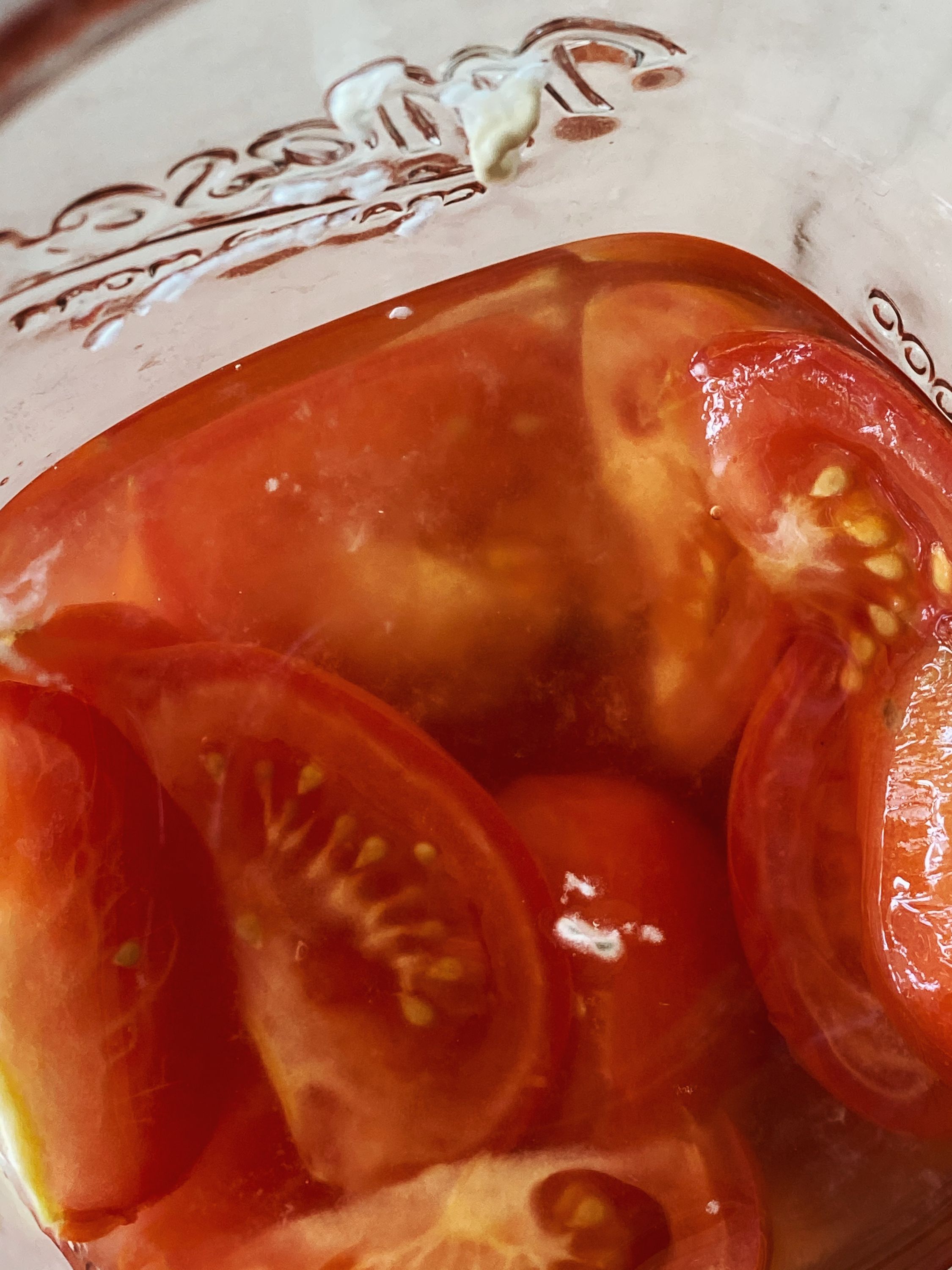
After a week, the tomatoes were ready. I put the tomatoes in a strainer lined with cheese cloth. I then put the strainer in a bowl, covered it with plastic wrap, and let the tomato water fully drain overnight.
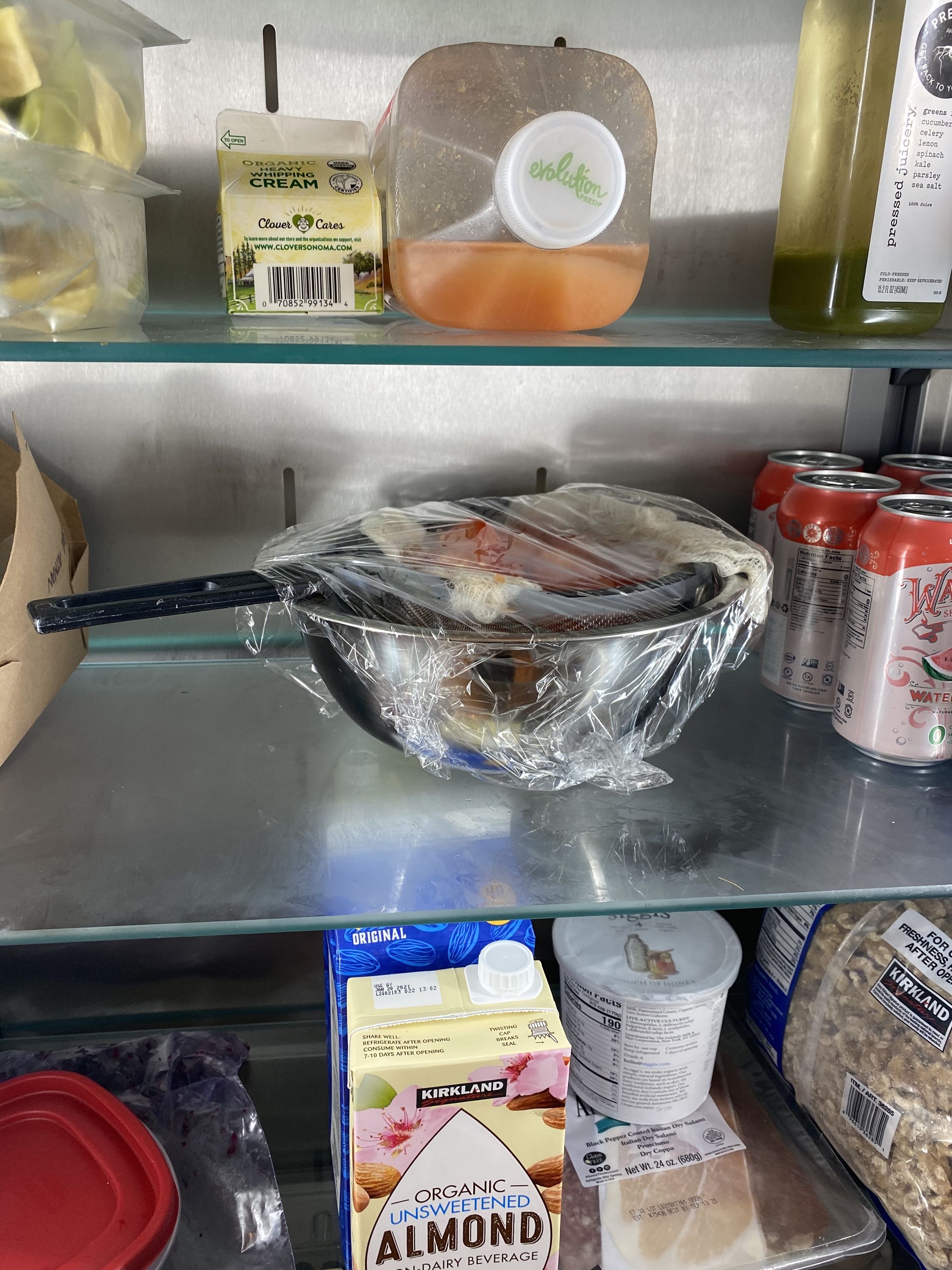
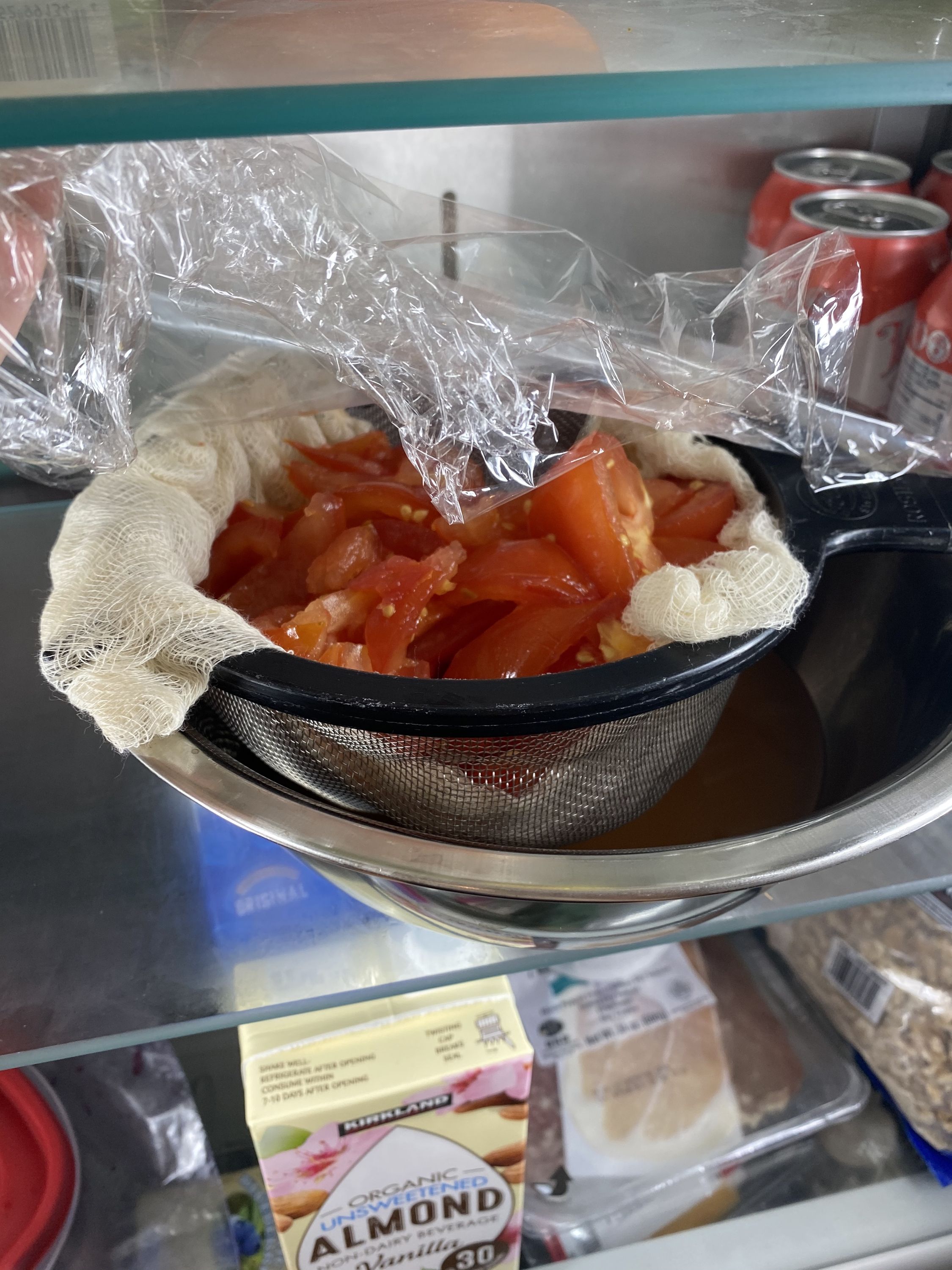
Afterwards, I had tomatoes and tomato water. I used the tomatoes in the next night’s tomato sauce, and used the tomato water to quick pickle vegetables. I found the pulps of the tomatoes to taste like tomatoes to an extreme degree with rich flavor and bursts of savory, umami-like flavor.
Quick-pickled radishes in lacto-fermented tomato water
I love pickled radishes. They work great as a topping or as a refreshing snack. It’s super easy to quick pickle radishes: take some thinly sliced radishes, cover them in tomato water, sprinkle some salt on top, and put it in the fridge.
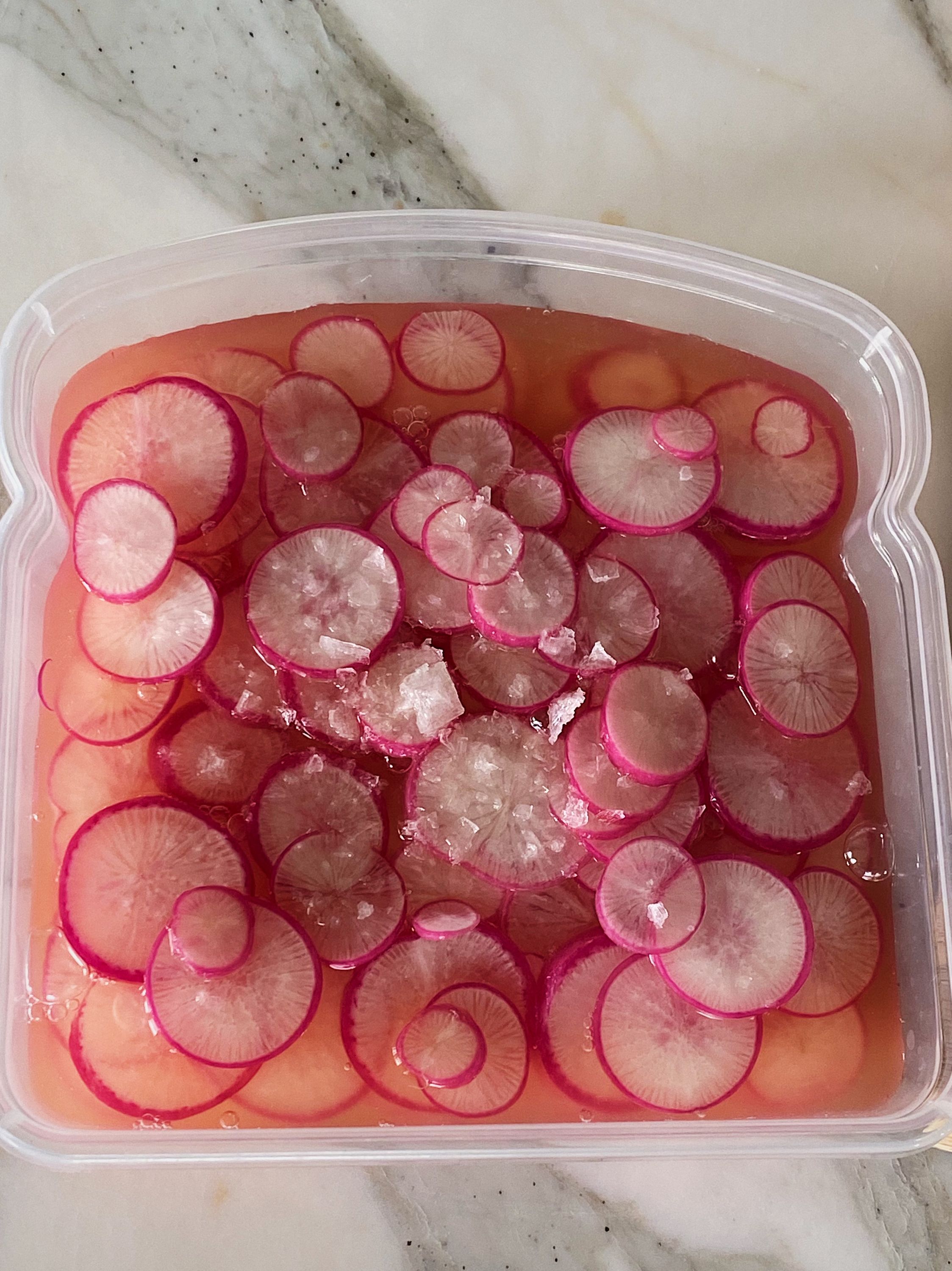
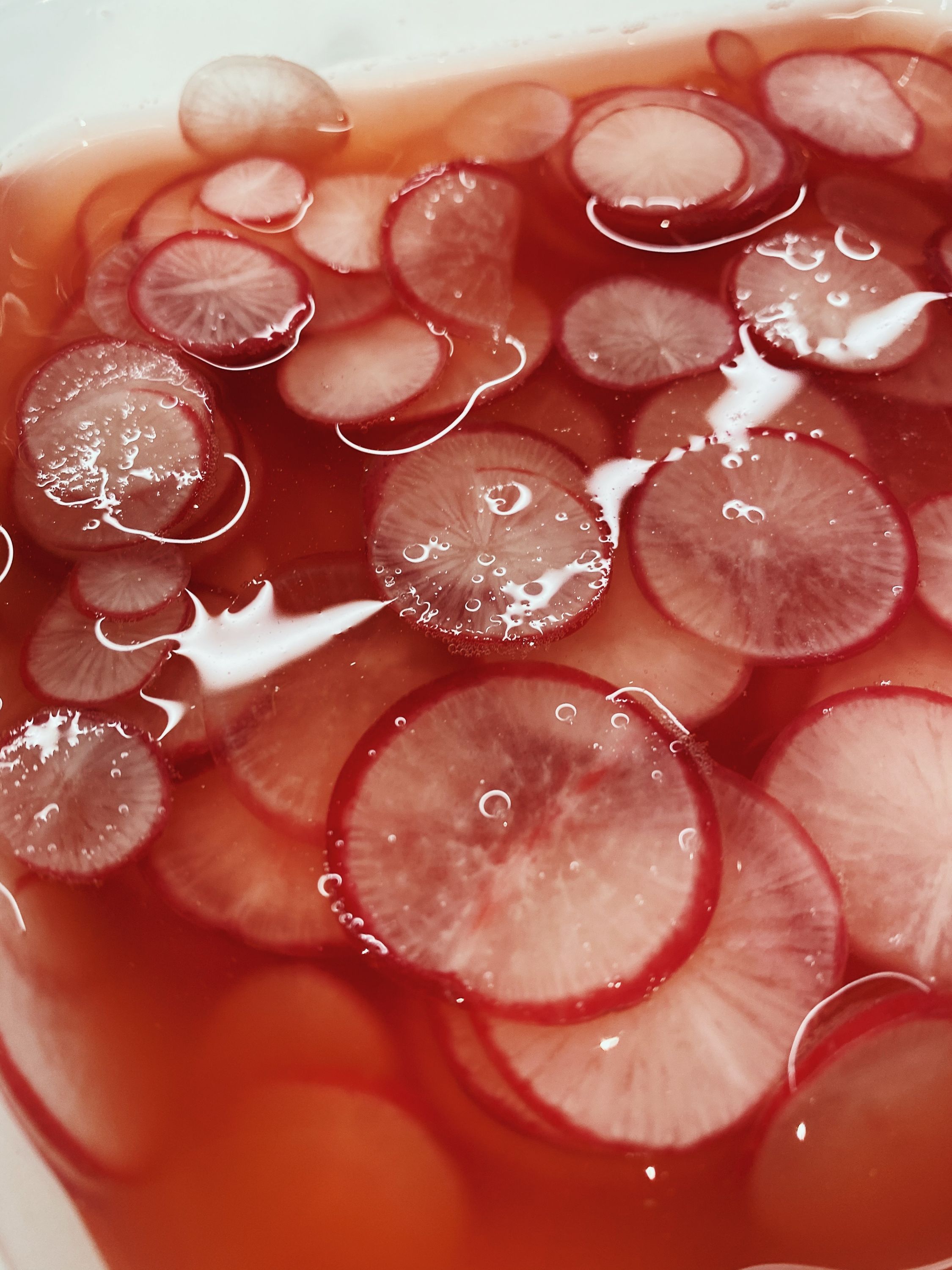
After a few hours, you’ll have some deliciously crunchy and savory radishes. It was great to have these as a garnish with dinner and a snack for the next couple of days after making them.
Conclusion
I’m planning on documenting more of my fermentation projects on my blog. As I mentioned above, I’m excited to make koji and miso, as well as other fermentations, lacto and otherwise, that aren’t in the Noma book. I’m really grateful to Noma for giving me such a nice starting point and making fermentation accessible and interesting.
I immediately posted online “Getting into fermentation so I have something to look forward to”↩
That being said, I am building a fermentation chamber! Excited to share more about that in an upcoming post.↩
Black garlic isn’t a fermented product, but instead a Maillard reaction.↩
There’s definitely other options. Some pickling techniques use percentages as high as 5-8%. For fruit, a friend told me 1.7% is worth trying, so I’m probably going to go with that next time I make lacto blueberries.↩